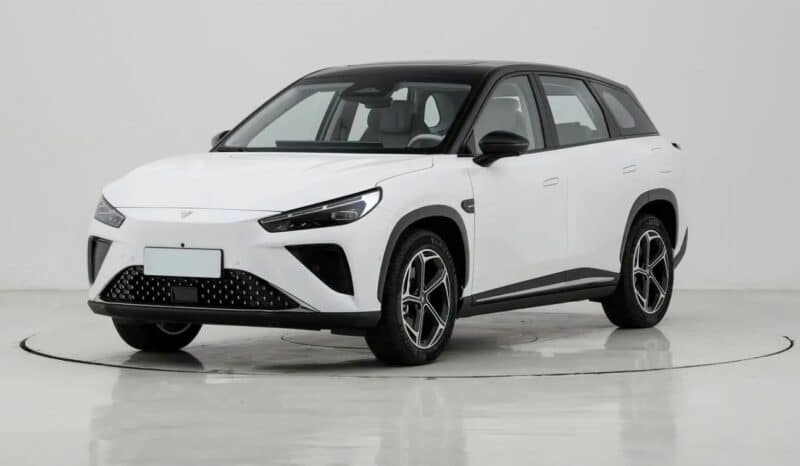This is the Neta L. A total of four models were launched in China with a price range of 129,900 – 159,900 yuan (17,900 – 22,000 USD). However, the 129,900 yuan entry-level model will not be officially launched until August.

The models launched this time are all EREVs. An EV version will be launched in the future. With that said, the power comes from a 1.5L four-cylinder range-extender that outputs 91 hp and an electric motor that outputs 231 hp. Its lithium iron phosphate battery packs are supplied by CATL, which takes 19 minutes to charge from 30% to 80%. Depending on the configuration, the battery pack capacity is 30 kWh or 40 kWh, which can provide 220 km or 310 km of CLTC pure electric range. The comprehensive range is 1,300 km. At the same time, Neta claims that its Neta L is the world’s fastest-charging EREV model.

Positioned as a medium-sized SUV and built based on Neta’s Shanhai Platform 2.0, the size of the Neta L is 4770/1900/1660 mm, and the wheelbase is 2810 mm. It has a drag coefficient of 0.258Cd. Throughout the vehicle, the Neta L is equipped with five millimeter-wave radars, a front-view camera, four surround-view (360) cameras, 12 ultrasonic radars, and a Driver Monitoring system camera, realizing Neta AD advanced driving assistance functions including parking assistance, adaptive cruise control, and lane center assist.


Consumers can choose from five exterior body colors including Magic Night Black, Comet White, Particle Blue, Juechen Silver, and Comet White & Magic Night Black. Additionally, its two-color body, blackened roof, and hidden door handles can be seen from the side. Neta also claims that the entire vehicle lighting reaches 3.37 square meters.

Coming to the interior, the large dual 15.6-inch screen for the central control screen and co-pilot entertainment screen is eye-catching, which has a 2K resolution and is powered by a Qualcomm Snapdragon 8155 chip. The full LCD instrument panel is hidden behind the D-shaped steering wheel. The co-pilot entertainment screen has a built-in Neta sky theater audio and video system with 16 in-car speakers, according to the brand. The cockpit also supports a variety of modes including nap mode, one-touch SPA mode, camping mode, outdoor viewing mode, karaoke mode, and pet mode.



Furthermore, the cockpit has a refrigerator with a capacity of 6.6 L. The temperature can be adjusted physically on the screen and remotely via voice commands or mobile apps. The rear passengers can also access folding tray tables from the back of the front seats.

Source: Neta, DongCheDi, AutoHome



